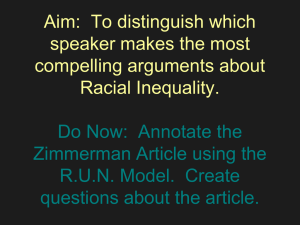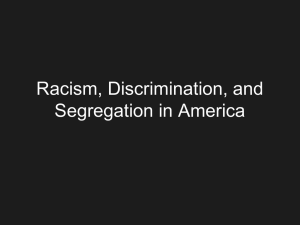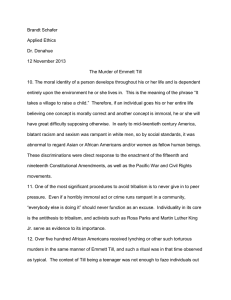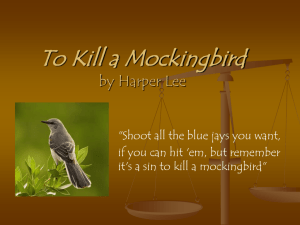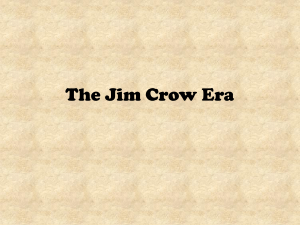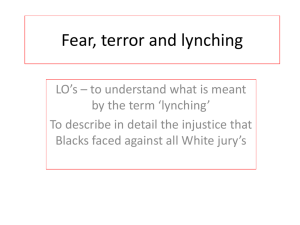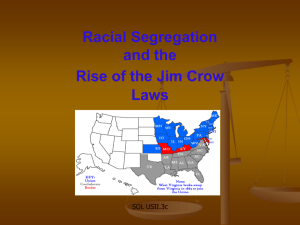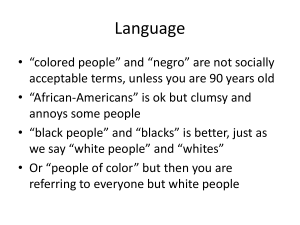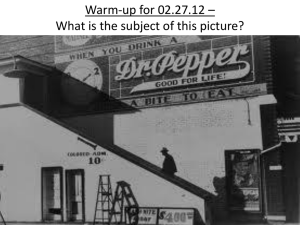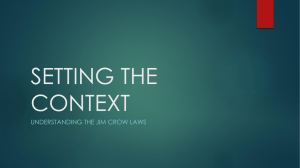Powerpoint
advertisement
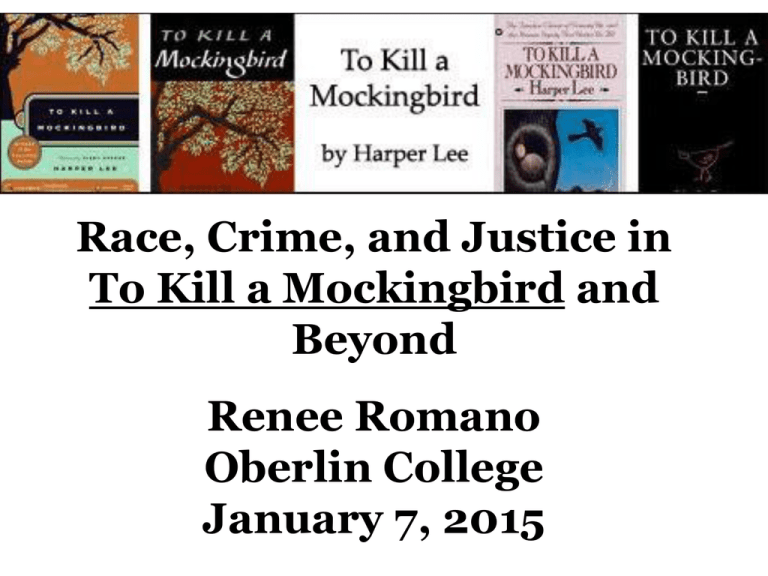
Race, Crime, and Justice in To Kill a Mockingbird and Beyond Renee Romano Oberlin College January 7, 2015 Harper Lee A few of the many foreign translations of To Kill a Mockingbir d “The First Vote” Harper’s Magazine, November 1867 Disfranchising Blacks in the South The blackface minstrel figure of “Jim Crow” Daily Life Under the Jim Crow regime Signs of Jim Crow "3436 Blots of Shame on the United States: 1889-1922.” A graphic representation of the extent of lynching in the US, prepared by the NAACP in 1922 A Postcard of a Lynching Postcard depicting the lynching of Lige Daniels, August 3, 1920. The back reads, "This was made in the court yard in Center, Texas. He is a 16 year old Black boy. He killed Earl's grandma. She was Florence's mother. Give this to Bud. From Aunt Myrtle." One of the other most influential books about race in the United States in the postwar period Law enforcement during the civil rights movement A Mississippi Sovereignty Commission Pamphlet The jury at the Emmett Till murder trial deliberated only 67 minutes before acquitting Roy Bryant and J.W. Milam of the crime. The two admitted killing Till for $4000 from Look Magazine several months later. In this 1962 Clifford Baldowski editorial cartoon, members of the Klan and southern lawmen kidnap “justice” while reassuring her that she is “in good hands.” A few of those whose murder cases have been reopened Birmingham church bombing victims Emmett Till Henry Dee and Charles Moore James Chaney, Andrew Goodman, and Mickey Schwerner Medgar Evers 5 of the 21 men put in jail since 1994 A jubilant Myrlie Evers after the 1994 conviction of Byron De La Beckwith for her husband’s 1963 murder. In the film about the trial, the white lawyer became the lead figure Washington Post-ABC Poll of December 27, 2014 Editorial Cartoon from The Star Tribune (Minneapolis) July 16, 2013
